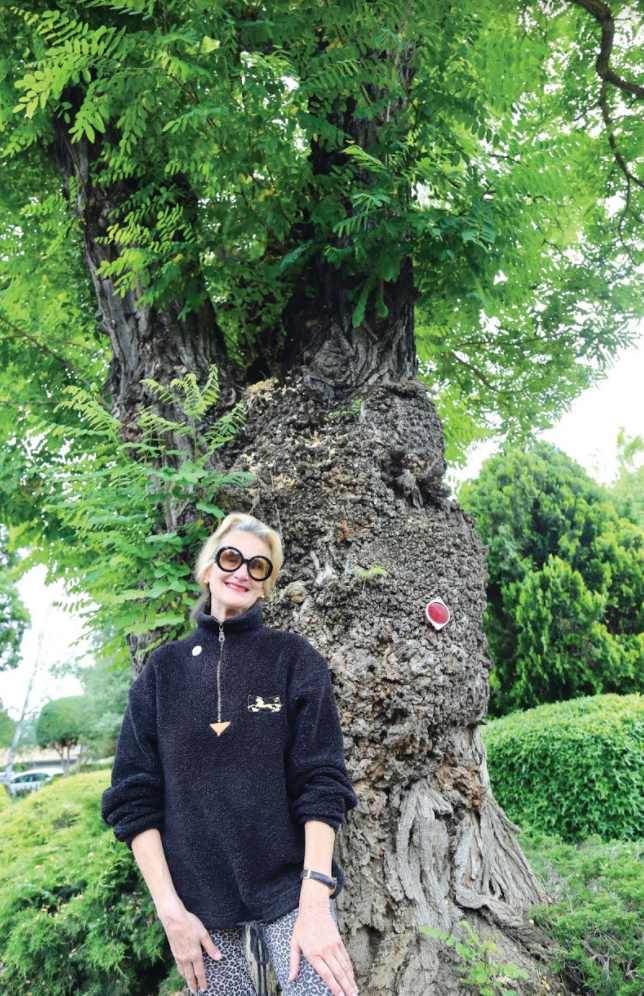
A Gilroy resident, who said the city broke state law by not informing the public about the 235 trees it plans to cut down, filed suit last week in Santa Clara County Superior Court asking that the project be stopped.
It also alleges that an arborist that will make $258,000 on the project may have a conflict of interest.
The lawsuit, brought by longtime resident Camille McCormack on May 25, asks the court to direct the city to rescind its approval of funds to support the removal of 235 trees as well as its authorization to have a city-contracted arborist complete the work.
“California’s good-government and environmental laws are very clear that the public must be involved in government decisions and environmentally harmful projects must be subject to review,” said Laura Beaton, attorney with Shute Mihaly & Weinberger, LLP, who is representing McCormack in the case.
The lawsuit argues the city failed to comply with state environmental and government transparency laws when it approved the tree removal earlier this month and triggered conflict-of-interest concerns by accepting the recommendations of West Coast Arborists, which provides arborist services to the city and stands to benefit financially from the decision.
“Gilroy heritage trees are central to our community character, and not all of the trees the city wants to cut down require removal,” said McCormack, who has spent her afternoons in recent weeks visiting the trees identified for removal by the city with a local arborist. “They have to step back, get another evaluation and do it the right way.”
On May 1, the Gilroy City Council voted to amend its contract with West Coast Arborists and approve $258,000 for emergency tree removal, citing health and safety concerns.
In total, 235 trees—35 in Christmas Hill Park, 200 in other parts of the city—were identified as diseased or declining and needing to be removed.
The city is responsible for maintaining 18,000 trees in Gilroy’s parks, civic areas and public right of ways.
The lawsuit alleges the large number of trees to remove would make a significant impact on the environment and therefore requires a review under the California Environmental Quality Act.
It also argues the city may have violated the Brown Act, California’s open government law because the May 1 city council agenda item that led to the emergency tree removal decision was listed as “Budget and Contract Amendment with West Coast Arborists for Tree Maintenance” and is therefore misleading, as it assumes the city was authorizing tree care, not removal.
On Friday, McCormack stood in front of a giant locust tree on Miller Avenue that has been slated for removal and said the majority of the trees she has seen were not dead and dangerous.
“But,” she said, “that does not mean the city should not prune and maintain them.”
A letter, via her attorney was sent to city officials on May 15, outlining her concerns and asking for a stay of the city’s decision. A reply from the city attorney denied the allegations and indicated the tree removal would move forward as planned.
“The city was not willing to revisit its decision made in violation of the law, as such I was left no recourse but to go forth with a lawsuit,” said McCormack.
Local arborist, Moki Smith, said he was concerned about the city’s tree care regime, calling it “behind the times.”
“Based on my personal opinion, the city is behind the curve on taking care of their trees and placing an importance and value on the tree canopy,” said Smith, a licensed arborist who has been operating in the area for 18 years.
Smith was also concerned about how the city tracked and identified the trees slated for removal, saying it may be easy to innocently cut down the wrong tree, and what criteria the city was using to mark a tree as dead or in critical shape.
“They may have different criteria for calling a tree dead—it wasn’t mentioned in the report,” said Moki of the staff report supplied at the May 1 council meeting. “Ninety-nine percent of trees are a habitat for a host of organisms, especially as we are coming out of a drought and the vast majority of public trees all have structural issues.”
He added later, “The trees that were not completely dead could be retained if they were treated, and it could be cheaper than removal. There are very few cases where a tree cannot be saved or preserved.”
The city declined to comment on the allegations.
“City legal counsel has advised us that this matter is potential litigation and therefore the City is unable to comment or response to your questions below,” wrote City Administrator Gabe Gonzalez.












